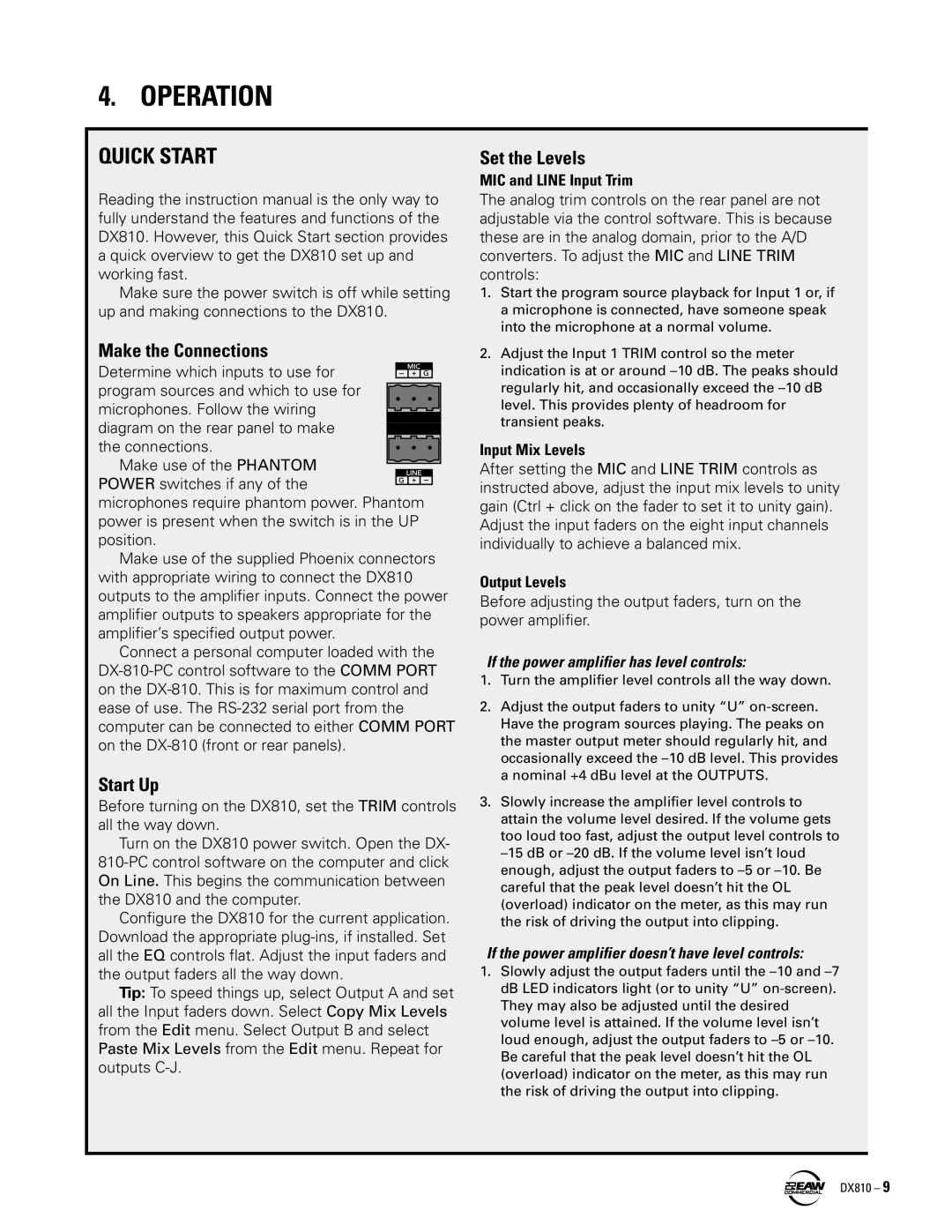
4. OPERATION
QUICK START
Reading the instruction manual is the only way to fully understand the features and functions of the DX810. However, this Quick Start section provides a quick overview to get the DX810 set up and working fast.
Make sure the power switch is off while setting up and making connections to the DX810.
Make the Connections
Determine which inputs to use for program sources and which to use for microphones. Follow the wiring
diagram on the rear panel to make the connections.
Make use of the PHANTOM
POWER switches if any of the![]() microphones require phantom power. Phantom power is present when the switch is in the UP position.
microphones require phantom power. Phantom power is present when the switch is in the UP position.
Make use of the supplied Phoenix connectors with appropriate wiring to connect the DX810 outputs to the amplifier inputs. Connect the power amplifier outputs to speakers appropriate for the amplifier’s specified output power.
Connect a personal computer loaded with the
Start Up
Before turning on the DX810, set the TRIM controls all the way down.
Turn on the DX810 power switch. Open the DX-
Configure the DX810 for the current application. Download the appropriate
Tip: To speed things up, select Output A and set all the Input faders down. Select Copy Mix Levels from the Edit menu. Select Output B and select Paste Mix Levels from the Edit menu. Repeat for outputs
Set the Levels
MIC and LINE Input Trim
The analog trim controls on the rear panel are not adjustable via the control software. This is because these are in the analog domain, prior to the A/D converters. To adjust the MIC and LINE TRIM controls:
1.Start the program source playback for Input 1 or, if a microphone is connected, have someone speak into the microphone at a normal volume.
2.Adjust the Input 1 TRIM control so the meter indication is at or around
Input Mix Levels
After setting the MIC and LINE TRIM controls as instructed above, adjust the input mix levels to unity gain (Ctrl + click on the fader to set it to unity gain). Adjust the input faders on the eight input channels individually to achieve a balanced mix.
Output Levels
Before adjusting the output faders, turn on the power amplifier.
If the power amplifier has level controls:
1.Turn the amplifier level controls all the way down.
2.Adjust the output faders to unity “U”
3.Slowly increase the amplifier level controls to attain the volume level desired. If the volume gets too loud too fast, adjust the output level controls to
If the power amplifier doesn’t have level controls:
1.Slowly adjust the output faders until the
DX810 – 9
